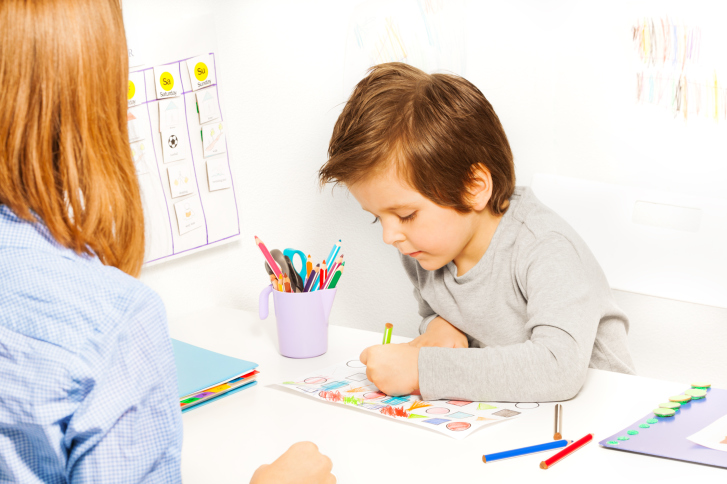Applied Behavioral Analysis (ABA) Therapy
Rehabilitation Services
Applied behavioral analysis (ABA) Therapy Services
Applied Behavioral Analysis (ABA) Right for Your Child?
ABA involves several phases, allowing for an approach that’s tailored to your child’s specific needs.

Consultation & Assessment
First, you’ll want to consult with a therapist trained in ABA. This consultation is called a functional behavior assessment (FBA). The therapist will ask about your child’s strengths and abilities as well as things that challenge them.
They’ll spend time interacting with your child to make observations about their behavior, communication level, and skills.
Effective ASD treatment looks different for every child. To this end, ABA therapists will mention specific interventions that fit your child’s needs. They may also ask about integrating certain strategies into your home life.
Developing a plan
Your child’s therapist will use their observations from the initial consultation to create a formal plan for therapy. This plan should align with your child’s unique needs and include concrete treatment goals.
These goals generally relate to reducing problematic or harmful behaviors, such as tantrums or self-injury, and increasing or improving communication and other skills.
The plan will also include specific strategies caregivers, teachers, and the therapist can use to achieve treatment goals. This helps to keep everyone who works with your child on the same page.
Specific Interventions
The specific type of ABA used may depend on your child’s age, challenges, and other factors.
a. Early intensive behavioral intervention (EIBI).
This is often recommended for children younger than 5. It involves an intensive, individualized curriculum designed to teach communication, social interaction, and functional and adaptive skills.
b. Discrete trial training.
This training aims to teach skills through structured task completion and rewards.
c. Pivotal response training.
This training lets your child take the lead in a learning activity, though the therapist often offers a few choices based on specific skills.
d. Early Start Denver Model (ESDM).
This involves play-based activities that incorporate several goals at once.
e. Verbal behavior interventions.
These can help children become more verbal or increase their communication skills.
f. Caregiver training
ABA also relies on parents and caregivers to help reinforce desired behaviors outside of therapy.
Your child’s therapist will teach you and your child’s teachers about strategies that will help to reinforce the work they do in therapy.
You’ll also learn how to safely avoid types of reinforcement that are less effective, such as giving in to tantrums.
Frequent evaluation
ABA therapists try to uncover causes of certain behaviors to help your child change or improve them. Over the course of therapy, your child’s therapist may adapt their approach based on how your child responds to certain interventions.
As long as your child continues treatment, their therapist will continue to monitor their progress and analyze which strategies are working and where your child may benefit from different treatment tactics.
The goal of treatment depends largely on your child’s individual needs. However, ABA often results in children:
a Showing more interest in people around them
b. Communicating with other people more effectively
c Learning to ask for things they want (a certain toy or food, for example), clearly and specifically
d. Having more focus at school
e. Reducing or stopping self-harming behaviors
f. Having fewer tantrums or other outbursts
Find our Location
Request Information
Make an Appointment
Refer a Patient
Newsletter Sign-Up
Copyright 2021 Mile Stone Clinic
Milestone Rehabilitation Clinic,
Ordnance Mart Malir Cantt Karachi,
Phone: 0347-8800493
Copyright 2021 MileStone Clinic
